 | Michigan Schoolmasters' Club - Education - 1894 - 554 pages
...realized unless supplemented by experimental verification. Such a one is the folB B AC BC | AC/BC lowing: "In any triangle the square of the side opposite an acute angle is equal to the sum of the squares of the other two sides minus twice the product of one of these sides and the projection of... | |
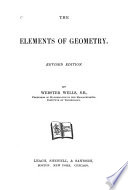 | Webster Wells - Geometry - 1894 - 400 pages
...between the projections of the extremities of the first. PROPOSITION XXVIII. THEOREM. 277. In ani/ triangle, the square of the side opposite an acute angle is equal to the sum of the squares of the other two sides, minus twice the product of one of these sides and the projection of... | |
 | George Albert Wentworth, George Anthony Hill - Geometry - 1894 - 150 pages
...method of construction. Kuler 'and compass must be used. The proof is not required.) 3. Prove that in any triangle the square of the side opposite an acute angle is equivalent to the sum of the squares on the other two sides diminished by twice the product of one... | |
 | Alfred Hix Welsh - Plane trigonometry - 1894 - 228 pages
...37. PROPERTIES OF TRIANGLES. THEOREM I. The square of any side of a triangle is equal to the sum of the squares of the other two sides, minus twice the product of these sides into the cosine of their included angle. If the included angle, as A, is acute, a2 = V1... | |
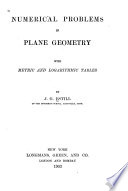 | Joe Garner Estill - 1896 - 214 pages
...centre of the circumscribed circle. What is the locus of the middle point of the base? 4. Prove that in any triangle the square of the side opposite an acute angle is equal to the sum of the squares of the other two sides diminished by twice the product of one of those sides and the projection... | |
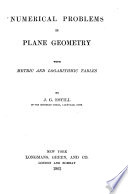 | Joe Garner Estill - 1896 - 186 pages
...circle is 10 feet. Find the side of an equilateral triangle having the same area as the circle. 4. In any triangle the square of the side opposite an acute angle is equal to the sum of the squares of the other two sides diminished by twice the product of one of these sides and the projection... | |
 | George Albert Wentworth - Mathematics - 1896 - 68 pages
...right triangle is equal to the difference of the squares of the hypotenuse and the other leg. 342. In any triangle, the square of the side opposite an acute angle is equal to the sum of the squares of the other two sides diminished by twice the product of one of those sides and the projection... | |
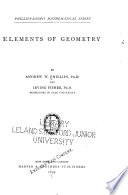 | Andrew Wheeler Phillips, Irving Fisher - Geometry - 1896 - 554 pages
...Fig. z, where one extremity of AB is on MN, AB' is the projection. PROPOSITION XVIII. THEOREM 325. In any triangle, the square of the side opposite an acute angle is equal to the sum of the squares of the other two sides, minus twice the product of one of these sides and the projection of... | |
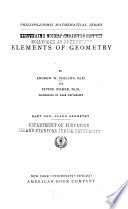 | Andrew Wheeler Phillips, Irving Fisher - Geometry - 1896 - 276 pages
...let fall from the extremities of AB upon the line MN, B M -N IMA' B' PROPOSITION XVIII. THEOREM 323, In any triangle, the square of the side opposite an acute angle is equal to the sum of the squares of the other two sides, minus twice the product of one of these sides and the projection of... | |
 | University of the South - 1896 - 148 pages
...hypothesis? What is the conclusion ? Define an axiom, the limit of a variable, a irapezoid, a rhombus. (5) In any triangle the square of the side opposite an acute angle is equal to the sum of the squares of the other two sides, minus twice the product of one of these sides into the projection of... | |
| |